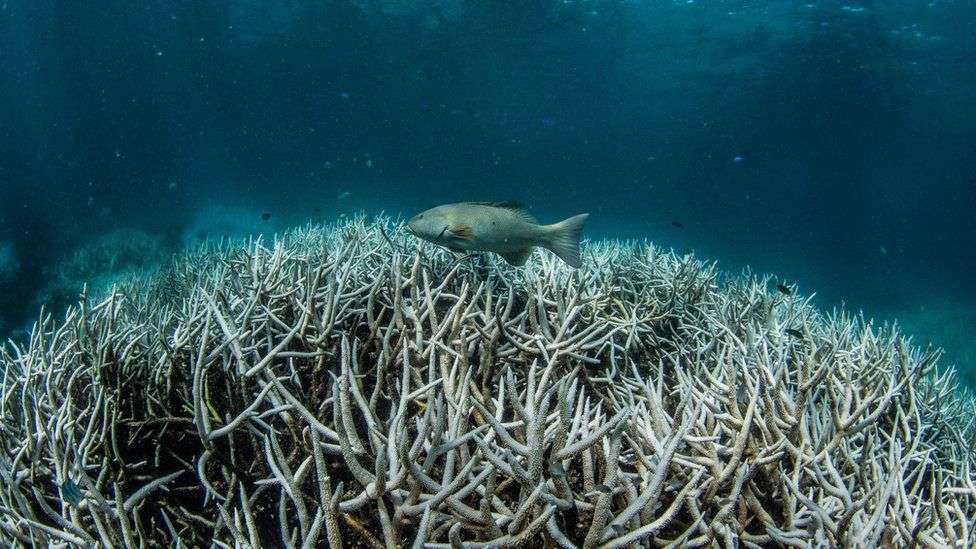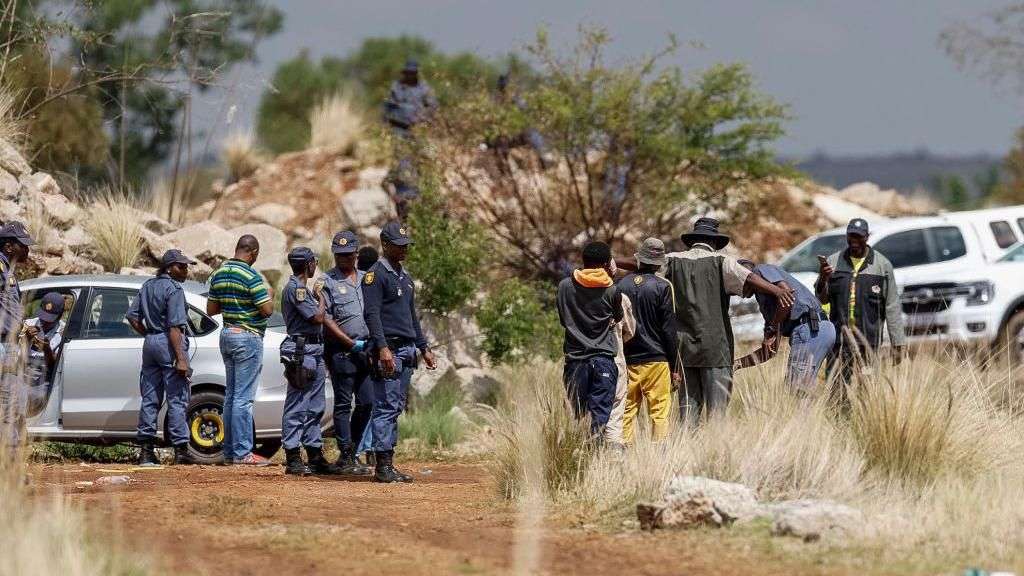Australia's iconic Great Barrier Reef is suffering another mass bleaching event, officials have confirmed.
Bleaching occurs when heat-stressed corals expel the algae that gives them life and colour.
It is the fifth time in eight years widespread damage has been detected at the Unesco World Heritage site.
Only two mass bleaching events had been recorded until 2016, and scientists say urgent climate action is needed for the reef to survive.
"The frequency and scale at which these mass bleaching events are now occurring is frightening - every summer we're holding our breath," said Greenpeace Australia's David Ritter.
"Claims that Australia is taking the health of the Great Barrier Reef seriously ring hollow when we continue to expand and subsidise the coal and gas industry to the tune of billions every year."
"It's literally cooking the Reef," the Climate Council's Simon Bradshaw added.
Why is the Great Barrier Reef in trouble?
The volunteers helping to map the Great Barrier Reef
Stretching over 2,300km (1,400 miles) off Australia's north-east coast, the Great Barrier Reef is the world's largest coral system and one of its most biodiverse habitats.
An aerial survey of 320 reefs - from the tip of Australia to the city of Bundaberg - showed most are experiencing prevalent bleaching, after a summer of heightened sea temperatures.
The Great Barrier Reef Marine Park Authority said in-water examinations are underway to determine the severity and depth of the damage - which likely varies greatly across the reef.
The body's Chief Scientist Roger Beeden told the OceanNewsUK that bleaching in the southern zone though, was the worst in almost 20 years, and could become "unprecedented".
"It's too early to say what the full consequences of this event is," he said. "If the conditions cool, we could see a lot of what's bleached recover."
Over the past decade the reef has rebuilt itself from other mass bleaching events, severe tropical cyclones, and crown-of-thorns starfish outbreaks, he added.
Record-breaking global sea temperatures have recently triggered similar bleaching events in the northern hemisphere, and this week bleaching was also spotted on the world's southern-most reef at Lord Howe Island - which too lies in Australian waters.
The Great Barrier Reef has been heritage-listed for over 40 years due to its "enormous" importance, but Unesco says the icon is under "serious threat" from warming seas and pollution.
Successive Australian governments have fought to keep the body from declaring the tourist drawcard "in danger", which could see it lose heritage status. The decision will be reviewed again in July.
Calling climate change "the biggest threat to coral reefs worldwide", Environment Minister Tanya Plibersek said her government has increased funding for reef conservation and introduced stronger emissions-reduction targets.
"It's essential we do everything we can to protect this amazing place for our kids and grandkids," she said.
The UN's most recent climate change report found the prevalence of future mass bleaching events depends on how quickly the world cuts emissions.








